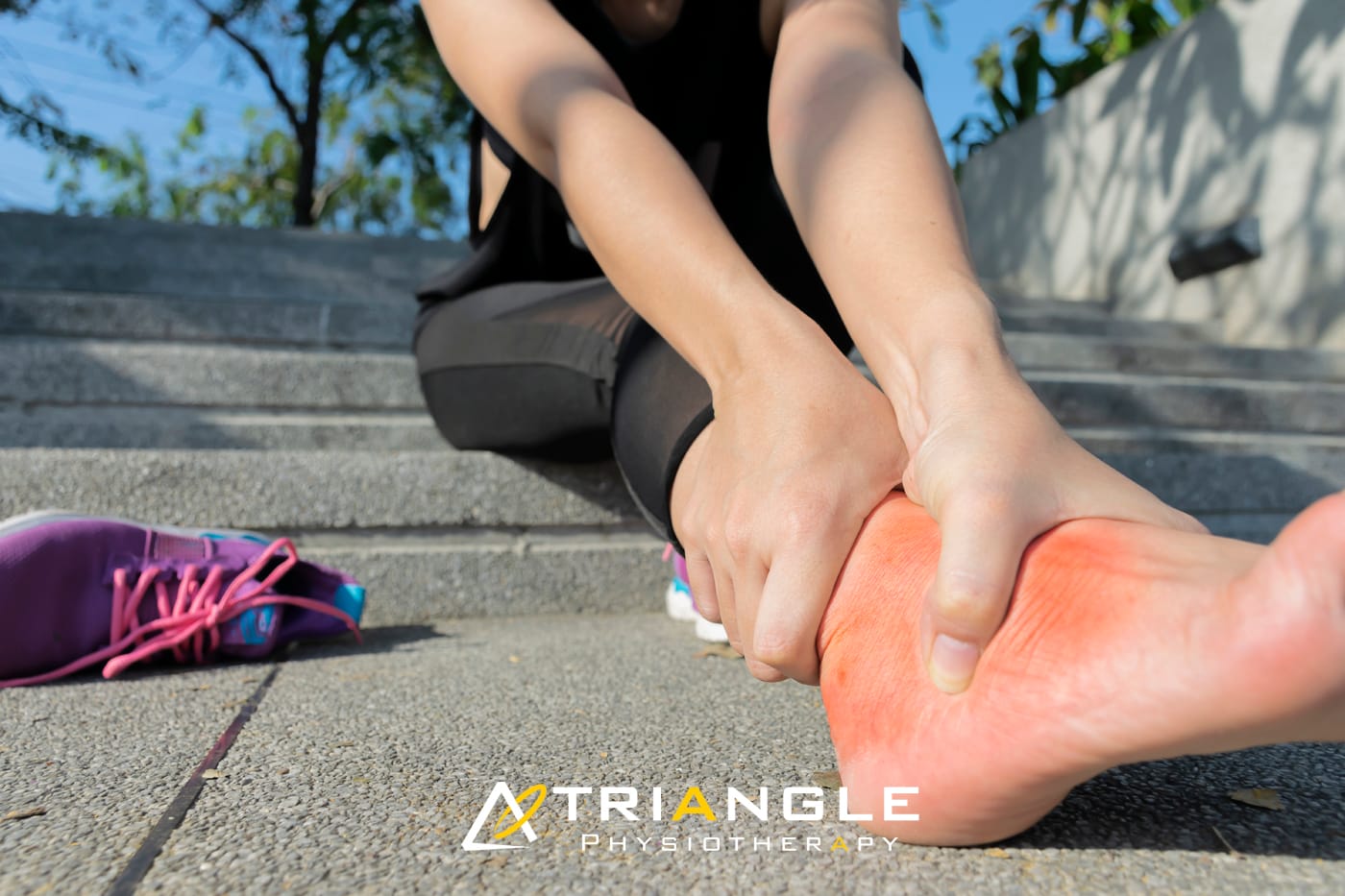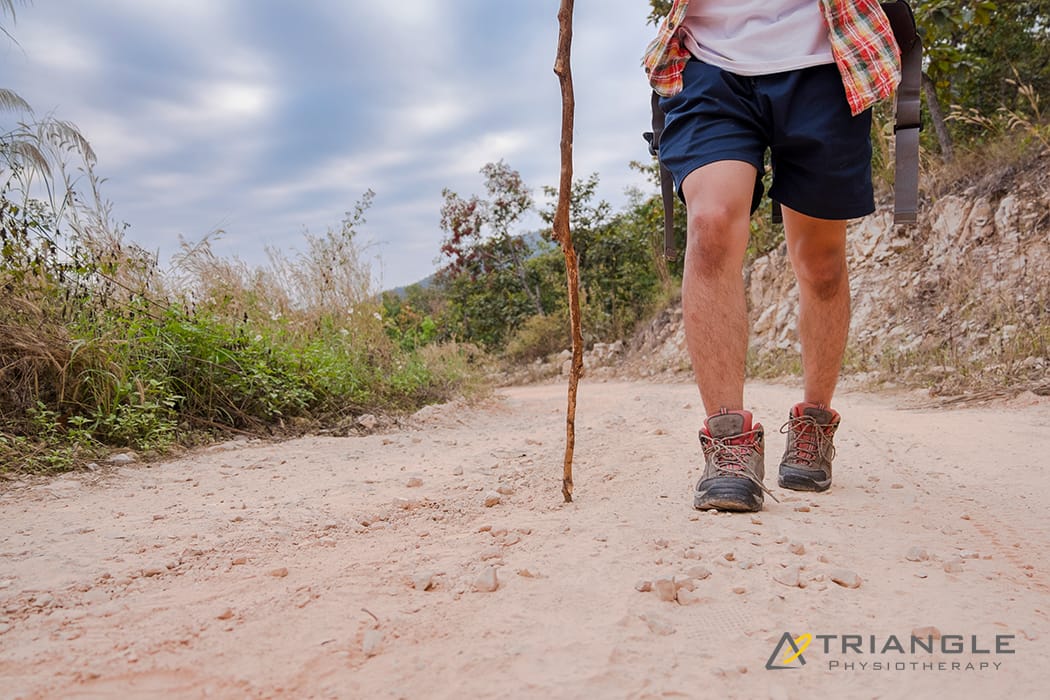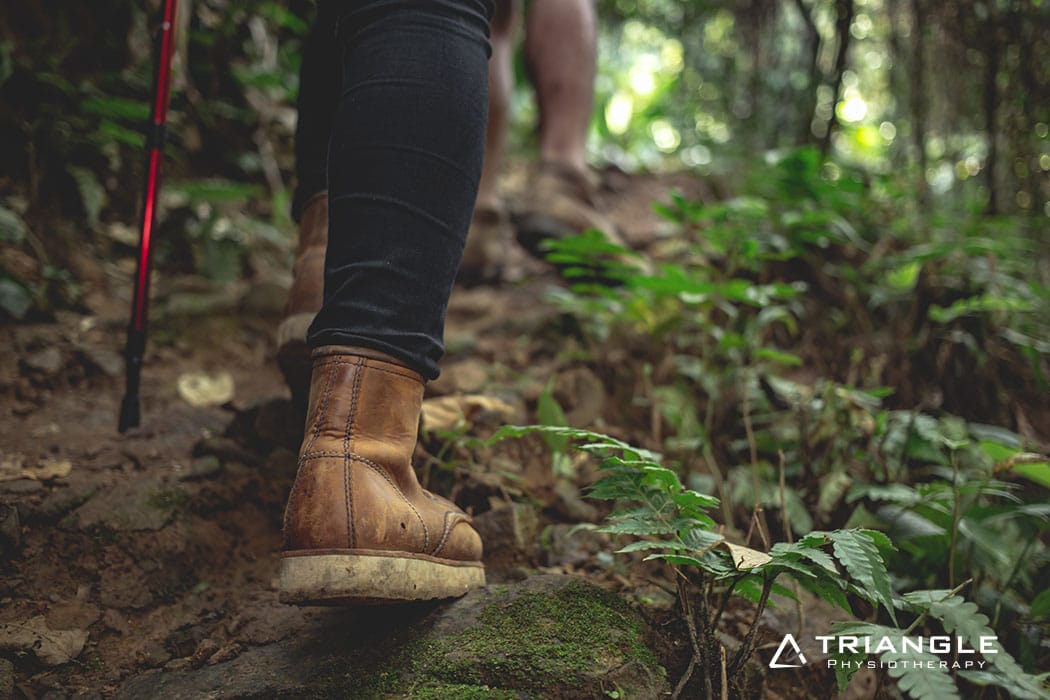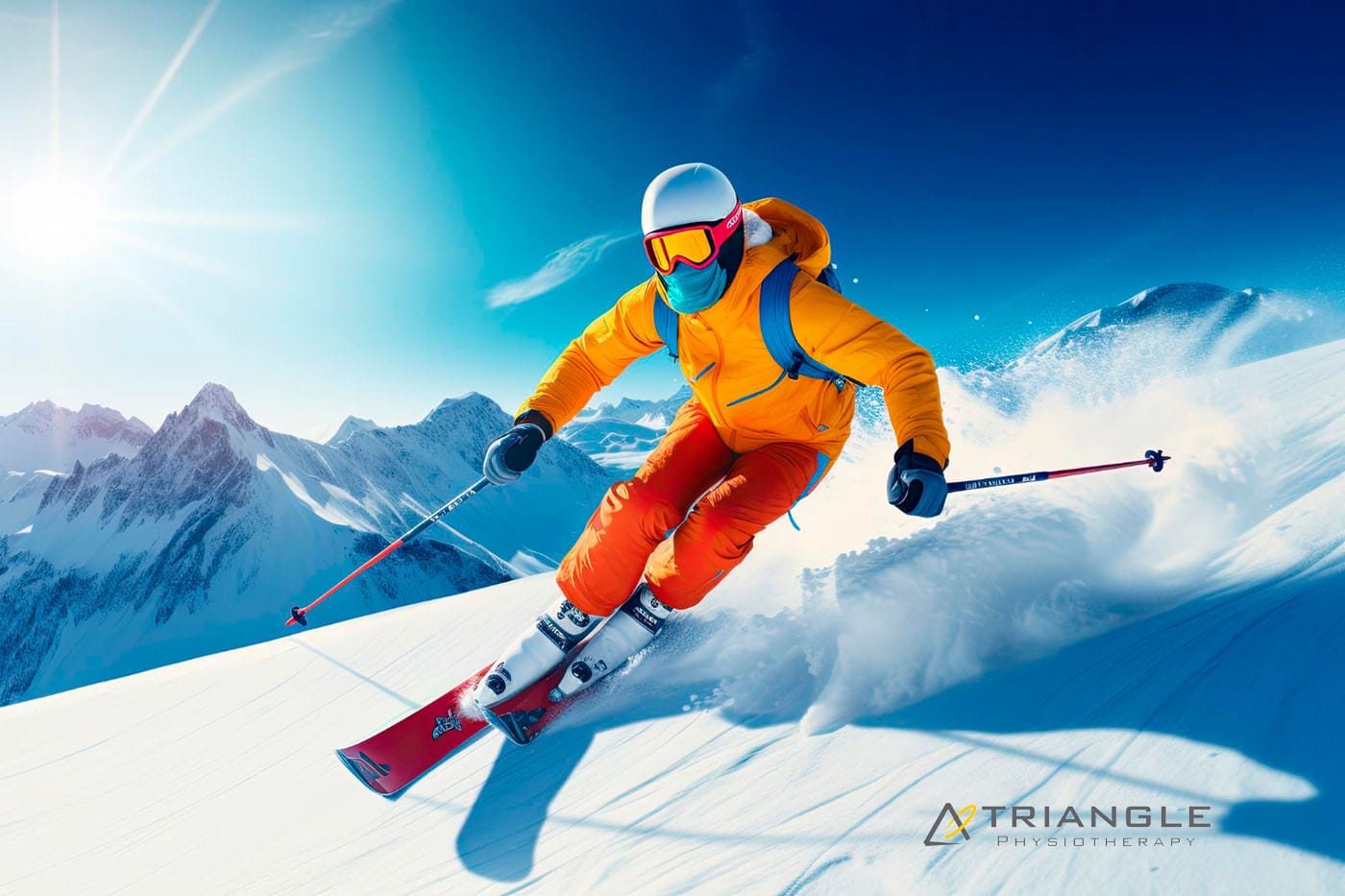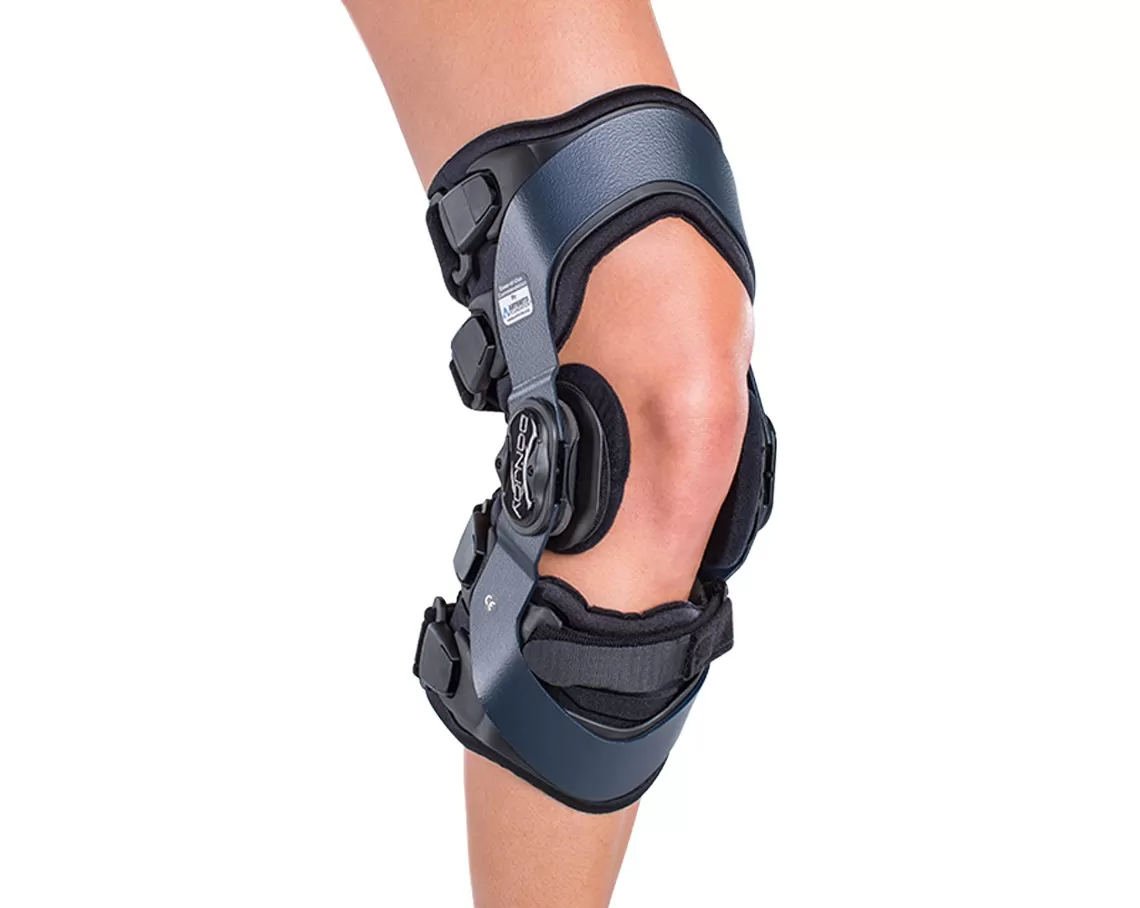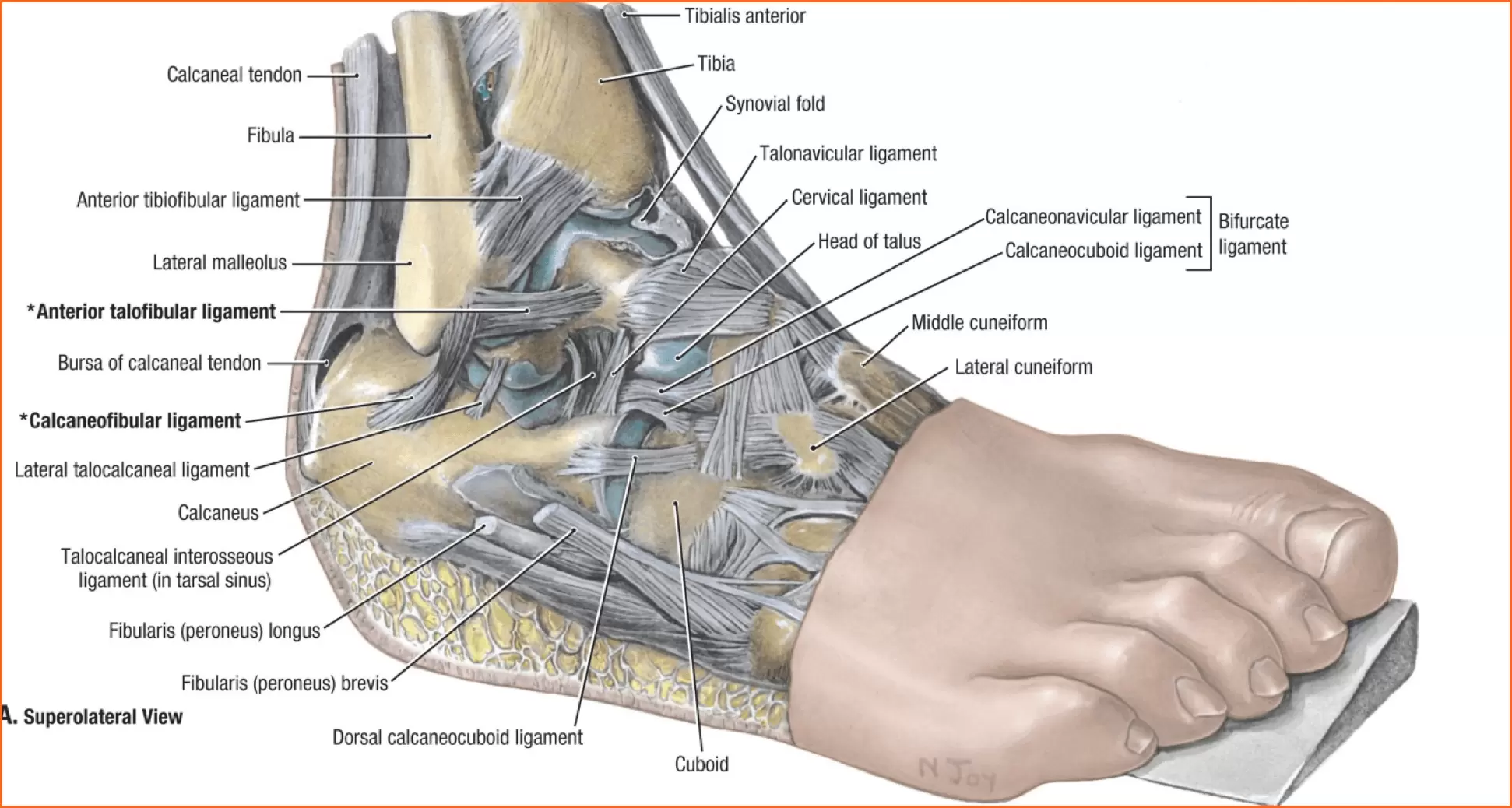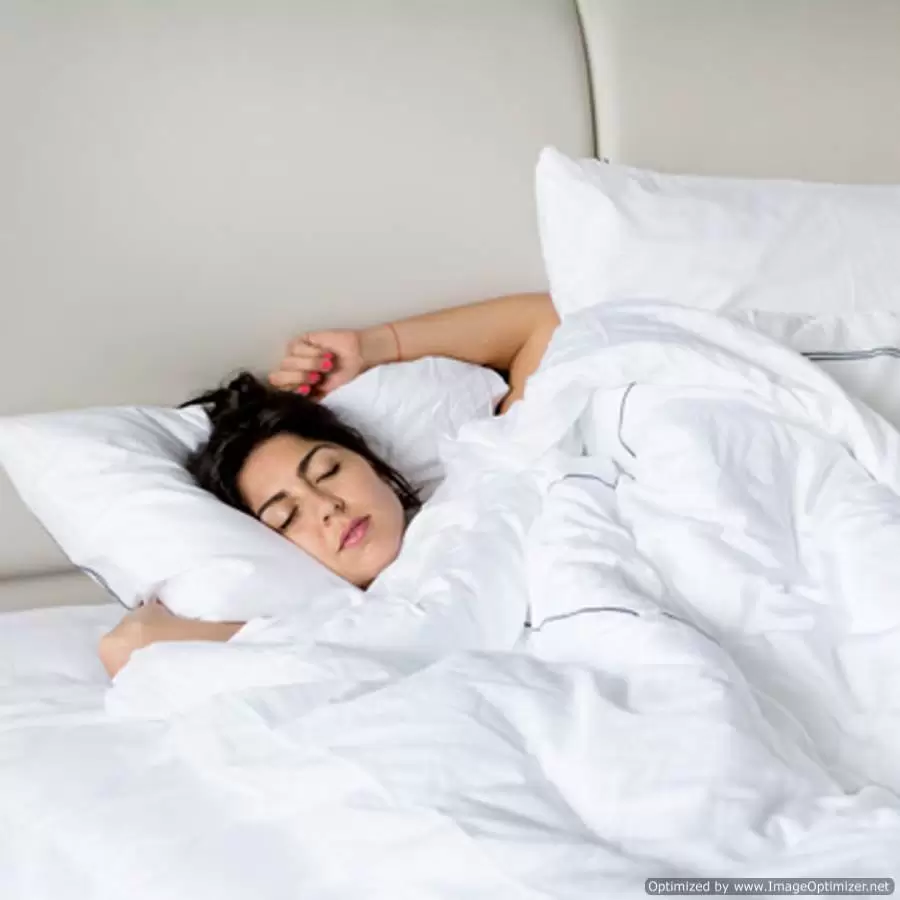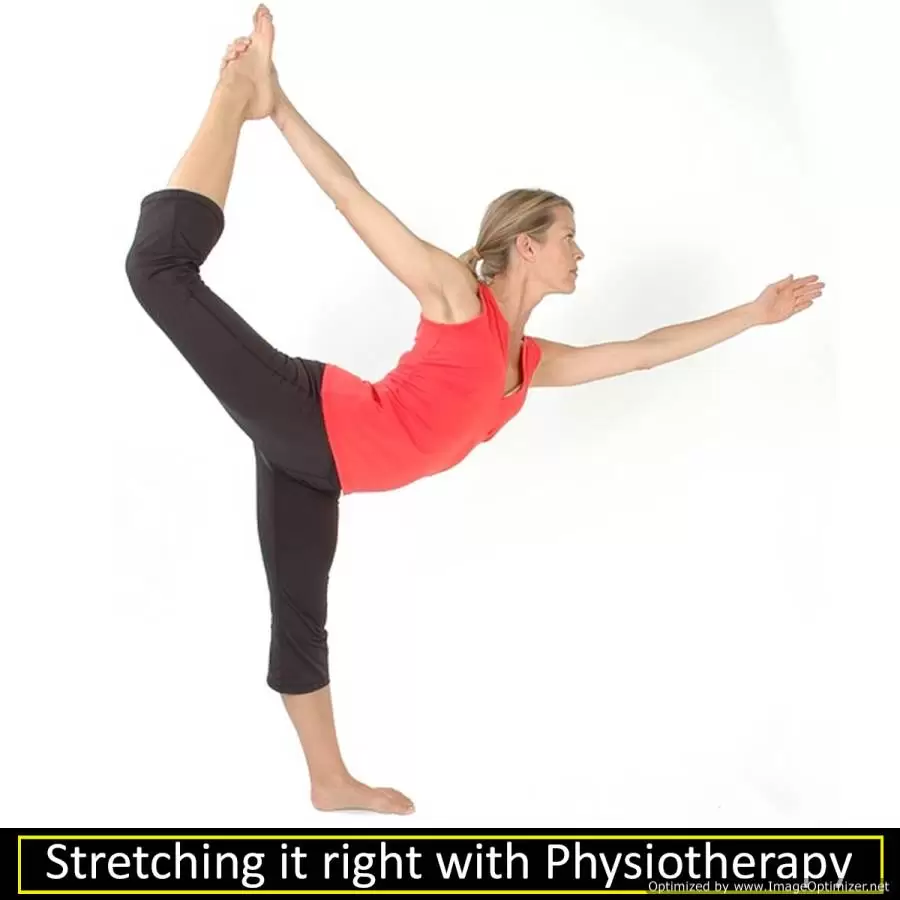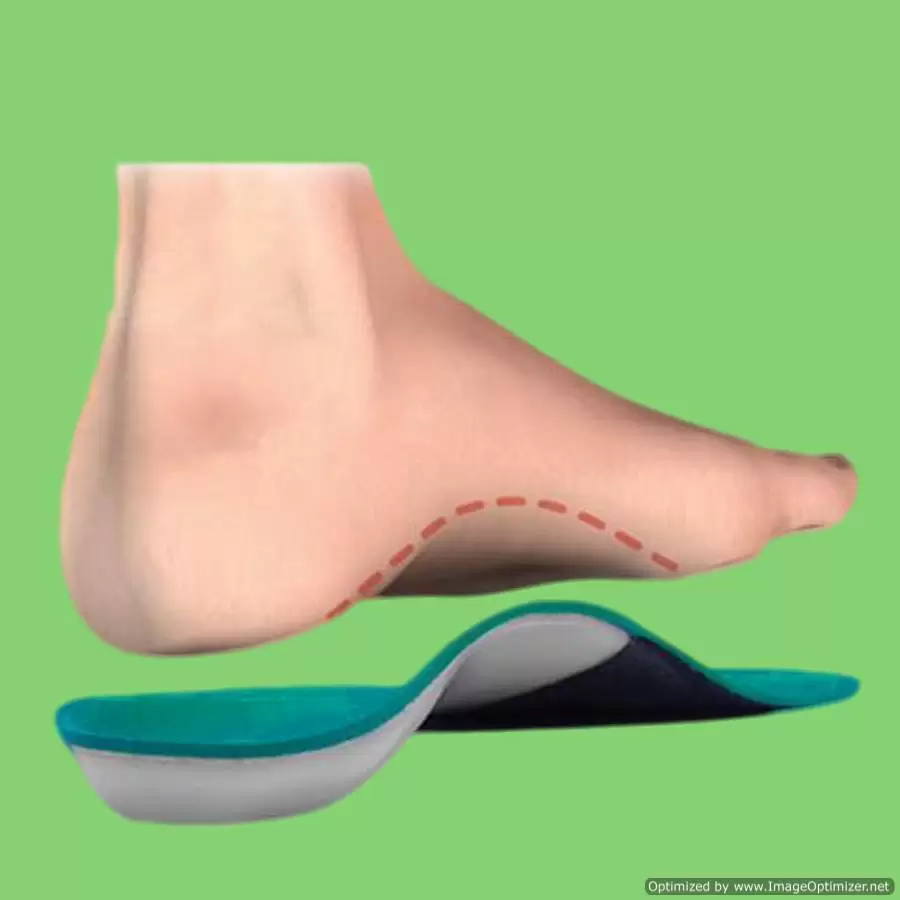High ankle sprains are a common and often misunderstood injury, particularly among athletes and active individuals. While a typical ankle sprain affects the ligaments on the outside of the ankle, a high ankle sprain involves the ligaments above the ankle joint, specifically the syndesmosis. This injury can lead to significant discomfort and prolonged recovery times. The team of physiotherapists at Triangle Physiotherapy have the knowledge and expertise to treat ankle sprains, provide strategies for recovery, and ways to prevent future injuries.
Understanding Recovery from Ankle Sprains
Recovery from a high ankle sprain requires a comprehensive approach, focusing on reducing pain and swelling, restoring function, and strengthening the affected area. Typically, recovery can take anywhere from a few weeks to several months, depending on the severity of the sprain. Immediate treatment often involves the RICE method—Rest, Ice, Compression, and Elevation. As symptoms improve, a structured rehabilitation program becomes essential to regain full range of motion and strength. Key Phases of Recovery are as follows:
- Acute Phase: Focus on pain management and reducing swelling.
- Rehabilitation Phase: Gradual reintroduction of movement and strength training.
- Return to Activity: Gradual progression to sports-specific activities and ensuring proper conditioning.
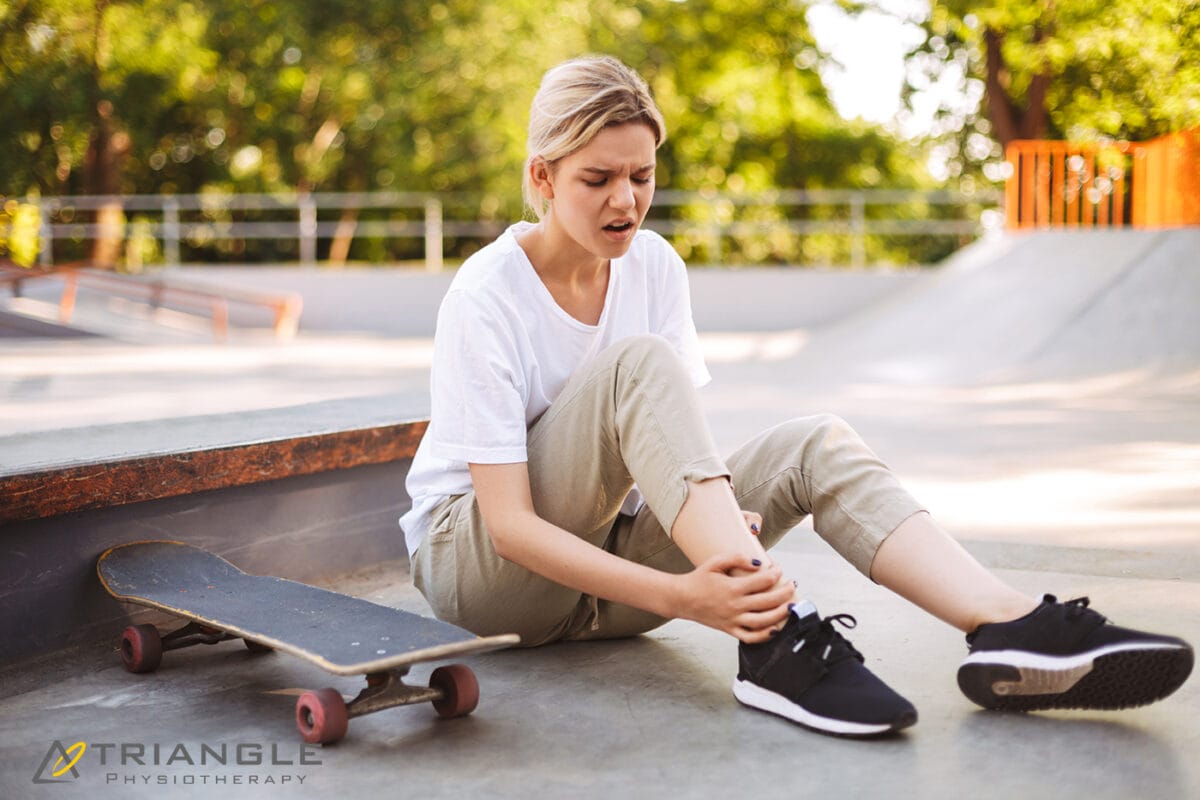
Neuromuscular Exercises for Ankle Sprains
Neuromuscular exercises are vital for enhancing proprioception, balance, and coordination. These exercises train the body to respond to external stimuli, improving the neuromuscular connections essential for injury prevention. Recommended Neuromuscular Exercises can include Balance Board Exercises, Single-Leg Stands, Agility Drills.
Mobility Incorporation
Mobility is crucial for a successful recovery from a high ankle sprain. Incorporating mobility exercises helps restore flexibility and range of motion to the affected area, allowing for a smoother transition back to regular activities. Effective Mobility Exercises can include Ankle Circles, Calf Stretch, Toe Taps to name a few of the exercises.
Progressive Resistance Exercises for Ankle Sprains
Once basic mobility and strength have been regained, it’s important to incorporate progressive resistance exercises. These exercises help rebuild strength in the ligaments and muscles surrounding the ankle, providing greater support and stability. Examples of Progressive Resistance Exercises can include Theraband Exercises, Heel Raises, Squats and Lunges.
Prevention
Preventing high ankle sprains is crucial, especially for those involved in high-impact sports. Here are some effective strategies:
1. Warm-Up Properly: Always perform dynamic stretches and warm-up routines before engaging in physical activity.
2. Strengthen Ankle Muscles: Regularly incorporate exercises targeting the muscles around the ankle.
3. Wear Proper Footwear: Ensure shoes provide adequate support and are appropriate for the activity.
4. Practice Balance and Agility Drills: Regularly engage in activities that improve balance and coordination.
FAQs about Ankle Sprains
1. What is the difference between a high ankle sprain and a regular ankle sprain?
A. A high ankle sprain affects the ligaments above the ankle joint (the syndesmosis), while a regular ankle sprain involves the ligaments on the outside of the ankle. High ankle sprains typically take longer to heal.
2. How long does it take to recover from a high ankle sprain?
A. Recovery time varies depending on the severity of the injury, ranging from a few weeks to several months.
3. Can I return to sports before I’m fully healed?
A. It’s essential to follow a structured rehabilitation program and consult with a healthcare professional like a physiotherapist or chiropractor before returning to sports to avoid re-injury.
4. Are there any specific exercises to avoid during recovery?
A. High-impact activities or exercises that put excessive strain on the ankle, such as running or jumping, should be avoided until cleared by a professional.
Source: www.physio-pedia.com
Hiking is a wonderful way to explore nature and stay active, but it’s not without its risks. Understanding common hiking injuries, their causes, symptoms, and effective prevention strategies can make your outdoor adventures safer and more enjoyable. Here’s a comprehensive guide to help you stay injury-free on the trails.
Understanding Hiking Related Injuries
Hiking can lead to various injuries, often related to the terrain, equipment, or physical condition of the hiker. Common hiking injuries include:
- Sprained Ankles: Caused by uneven ground, rocks, or roots.
- Knee Injuries: Such as patellar tendonitis or meniscus tears from repetitive strain.
- Muscle Strains: Typically in the calves, thighs, or lower back due to overexertion.
- Blisters and Hotspots: Resulting from friction and poorly fitting footwear.
- Sunburn and Heat Exhaustion: Due to prolonged exposure to the sun and inadequate hydration.
- Back Injuries: Resulting from improper lifting of heavy backpacks or poor posture.

Causes and Symptoms
Each type of injury has specific causes and symptoms:
- Sprained Ankles: Twisting the ankle on unstable ground, causing pain, swelling, and difficulty walking.
- Knee Injuries: Overuse, sudden twists, or impacts leading to pain, swelling, and limited mobility.
- Muscle Strains: Overstretching or overloading muscles, resulting in pain, stiffness, and reduced range of motion.
- Blisters and Hotspots: Friction from ill-fitting socks or boots causing painful, fluid-filled sacs on the skin.
- Sunburn and Heat Exhaustion: Excessive sun exposure leading to red, painful skin, dehydration, dizziness, and nausea.
- Back Injuries: Lifting heavy loads improperly, causing pain, stiffness, or spasms in the lower back.
Importance of Physiotherapy for Hiking Injuries
Physiotherapy plays a crucial role in treating hiking injuries by promoting recovery, restoring mobility, and preventing future problems. Benefits include:
- Pain Relief: Through targeted exercises and techniques.
- Restoration of Mobility: Enhancing flexibility and range of motion.
- Improvement in Strength: Strengthening muscles to support injured areas.
- Prevention of Recurrence: Teaching proper movement patterns and injury prevention strategies.
Key Principles of Physiotherapy Exercises for Pain Relief
Physiotherapy exercises focus on alleviating pain and promoting healing:
- Stretching and Range of Motion Exercises: Improve flexibility and joint function.
- Proprioception Training: Enhance balance and stability to prevent re-injury.
- Manual Therapy: Techniques such as massage or joint mobilization to reduce pain and inflammation.
Strengthening Exercises
Building strength is essential for recovery and injury prevention:
- Core Strengthening: Supports the back and improves posture.
- Lower Body Exercises: Target muscles in the legs and hips for stability.
- Resistance Training: Uses bands or weights to strengthen specific muscle groups.
Neuromuscular Exercises for Pain Management and Prevention
These exercises improve coordination and control:
- Balance Exercises: Enhance stability on uneven terrain.
- Functional Movements: Mimic hiking motions to improve efficiency and reduce strain.
Progressive Resistance Training
Gradually increasing resistance builds strength:
- Incremental Loading: Challenges muscles without causing undue stress.
- Specificity: Tailors exercises to mimic hiking movements and demands.
Incorporating Stretching and Flexibility Exercises in Your Routine
Regular stretching maintains muscle elasticity and joint flexibility:
- Pre-hike Stretching: Warms up muscles and prepares them for activity.
- Post-hike Stretching: Helps muscles recover and prevents stiffness.
Tips for Safely Performing Physiotherapy Exercises
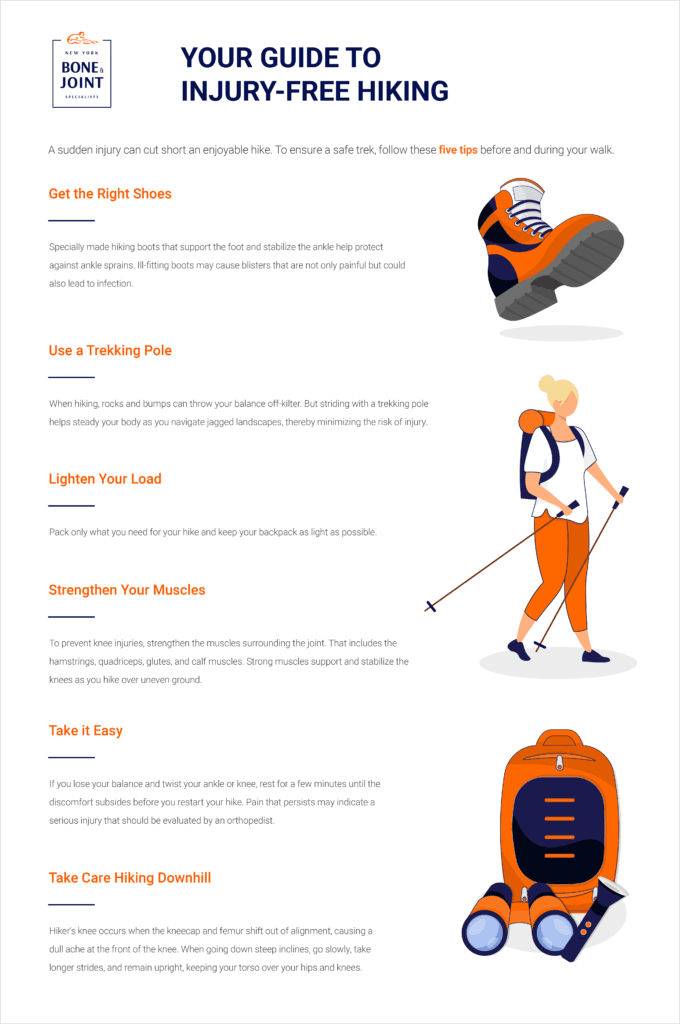
Follow these guidelines to avoid further injury:
- Consult a Professional: Get a personalized exercise plan from a physiotherapist.
- Start Gradually: Increase intensity and duration of exercises as tolerated.
- Listen to Your Body: Stop if you feel pain beyond normal discomfort.
- Stay Consistent: Perform exercises regularly for best results.
Hiking injuries can be prevented and managed effectively with the right knowledge and preparation. By understanding the causes, symptoms, and treatment options for common hiking injuries, along with incorporating physiotherapy exercises into your routine, you can enjoy the trails safely and confidently. Remember, safety and preparation are key to a rewarding hiking experience—happy trails!
Conclusion
Don’t let these physical conditions ever ride on you. You can consult any of our locations of Triangle Physiotherapy or simply Book An Appointment online.
“Whether you’re dealing with hiking-related injuries or any other physical discomfort, Triangle Physiotherapy offers expert care at multiple locations across the GTA. Our clinics provide Physiotherapy in Etobicoke, Oakville, North York, Toronto, Lawrence Park, Queens Quay, Erin Mills, Mississauga, and Liberty Village. Visit us to receive tailored treatment that helps you get back on your feet and enjoy the activities you love.”
Hiking is a fantastic way to enjoy the great outdoors and stay fit, but it can also pose some risks. Whether you’re new to hiking or a seasoned backpacker, there are numerous factors to take into account before heading out on the trails. You need to evaluate your backpack’s weight, choose appropriate footwear, plan your food and hydration, check the weather, and map out your routes. Additionally, since hiking often takes you off the beaten path, it’s essential to take precautions against three common hiking injuries: knee pain, ankle sprains, and sore feet.
Is it necessary to warm up before hiking?
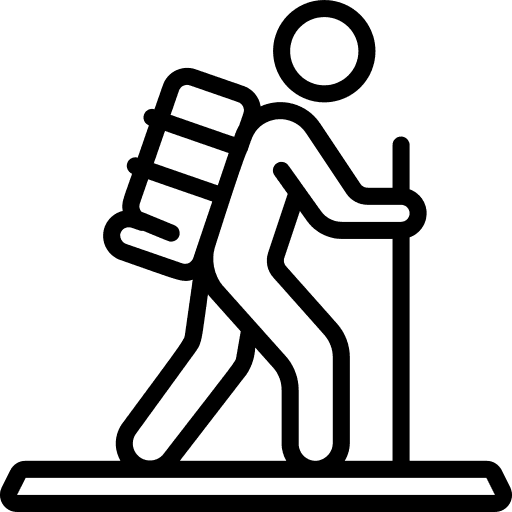
Yes, it is necessary to warm up before hiking. Warming up helps prepare your muscles and joints for physical activity, reducing the risk of injury. Here are some reasons why warming up is important before hiking:
Benefits of Warming Up Before Hiking
- Increases Blood Flow: A proper warm-up increases blood flow to your muscles, delivering oxygen and nutrients that help them perform better.
- Enhances Flexibility: Warming up loosens your muscles and increases your range of motion, making it easier to navigate uneven terrain.
- Reduces Injury Risk: Warm muscles are less prone to strains, sprains, and other injuries.
- Prepares Your Heart: Gradually increasing your heart rate helps prepare your cardiovascular system for the more strenuous activity of hiking.
- Improves Performance: A good warm-up can improve your overall performance, making your hike more enjoyable and less exhausting.
What are some effective warm up exercises to do before hiking?
Effective Warm-Up Exercises
- Walking or Light Jogging: Start with 5-10 minutes of brisk walking or light jogging to get your blood flowing.
- Dynamic Stretches: Perform dynamic stretches like leg swings, arm circles, and torso twists to loosen up your muscles and joints.
- Ankle Rotations: Rotate your ankles in circles to prepare them for the uneven terrain.
- Hip Circles: Rotate your hips to loosen the hip joints, which are crucial for hiking.
- Calf Raises: Perform calf raises to warm up your calves, which are heavily used during hiking.
Taking a few minutes to warm up before you start your hike can make a significant difference in your overall hiking experience and help prevent injuries.
What are the most common hiking injuries?
Some of the most common hiking injuries are:
- Knee Pain
- Ankle Sprain
- Foot Pain
Knee Pain when Hiking
Knee pain is a common issue among hikers, especially on longer or more challenging trails. Here’s a comprehensive approach to understanding, preventing, and managing knee pain when hiking:
Causes of Knee Pain While Hiking
- Overuse and Strain: Continuous stress on the knee joint from uphill climbs, downhill descents, or long sessions of hiking.
- Improper Biomechanics: Poor hiking technique, such as improper foot placement or stride, can strain the knee joint.
- Previous Injuries: Past knee injuries or conditions like arthritis can flare up during hiking.
- Improper Gear: Worn-out or inappropriate footwear lacking proper cushioning and support.
Ankle Sprain when Hiking
An ankle sprain can be a painful and frustrating injury, especially when hiking in rugged terrain. Here’s how to understand, prevent, and manage ankle sprains while hiking:
Causes of Ankle Sprains While Hiking
- Uneven Terrain: Stepping on uneven surfaces, rocks, or roots can twist or roll the ankle.
- Fatigue: Muscles that support the ankle can become tired, leading to less stability and increased risk of injury.
- Inadequate Footwear: Wearing shoes or boots without proper ankle support or that are worn out.
Foot Pain when Hiking
Foot pain while hiking can be uncomfortable and distracting. Here’s how to understand, prevent, and manage foot pain effectively:
Causes of Foot Pain While Hiking
- Improper Footwear: Shoes or boots that are too tight, loose, worn out, or lacking proper cushioning and support.
- Overuse or Strain: Prolonged walking or hiking, especially on challenging terrain, can strain the muscles and joints of the feet.
- Blisters: Friction from improperly fitting shoes or moisture buildup can lead to painful blisters.
If you get injured while hiking, consult one of our physiotherapists who can help you with treating the injuries as well as advise and educate you on prevention so you can enjoy your outdoor activities without pain and discomfort.
Click here to book an appointment with a physiotherapist at one of our eight locations.
- Physiotherapy Etobicoke – Triangle Physiotherapy Etobicoke
- Oakville Physiotherapy Clinic – Triangle Physiotherapy Oakville
- Physiotherapy North York – Triangle Physiotherapy North York
- Mississauga Physiotherapy Clinics – Triangle Physiotherapy Mississauga
- Downtown Physiotherapy Clinics – Triangle Physiotherapy King West
- Uptown Physiotherapy Clinics – Triangle Physiotherapy Lawrence Park
- Physiotherapy Clinic Downtown Toronto – Triangle Physiotherapy Queens Quay
- Physiotherapy Clinics Mississauga – Triangle Physiotherapy Erin Mills
Ankle rehabilitation through physiotherapy involves a systematic approach to regaining strength, flexibility, stability, and functionality after an ankle injury. Here’s a step-by-step guide:
Ankle Anatomy and Injury Overview
Ankles are complex joints that connect the lower leg bones (the tibia and fibula) to the foot bones (the talus and calcaneus). The anatomy of the ankle includes bones, ligaments, tendons, and muscles, all of which work together to provide stability, support, and mobility.
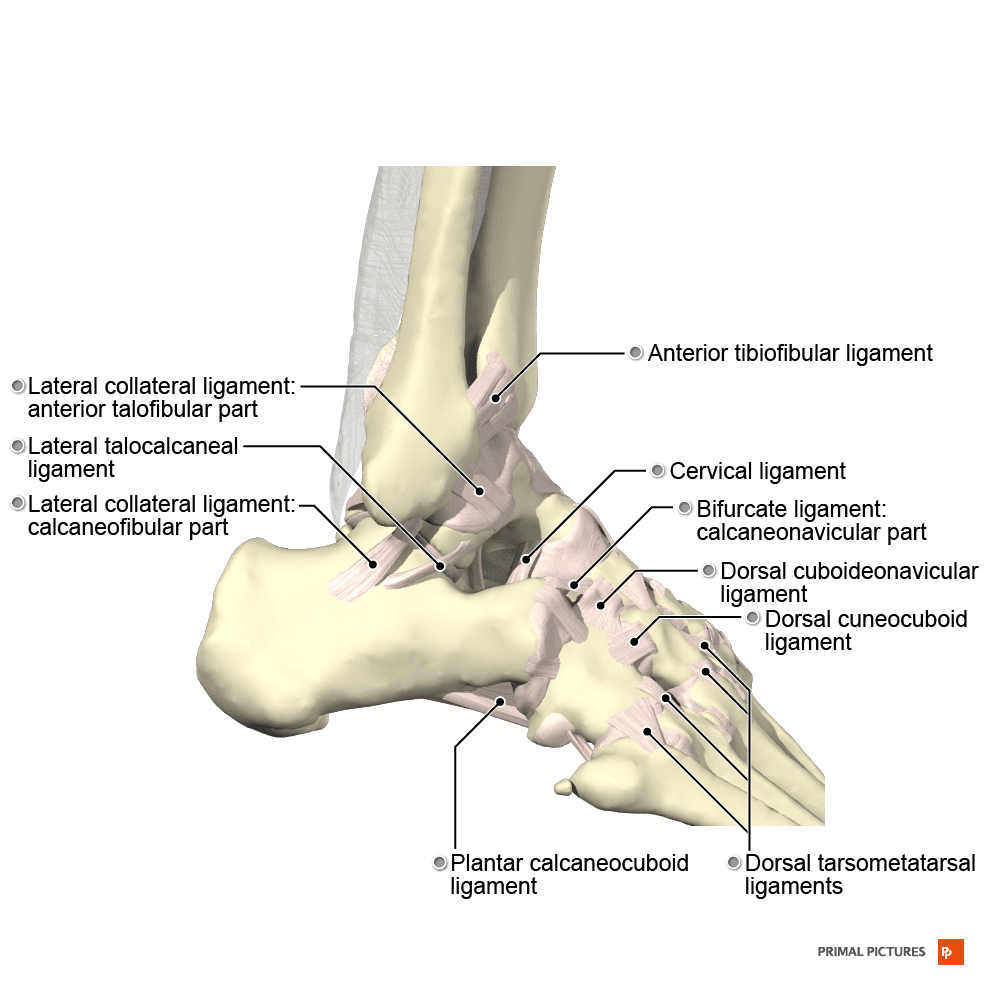
Common Ankle Injuries
- Sprains: Ankle sprains occur when the ligaments are stretched or torn, usually due to an inversion or eversion injury. Lateral ankle sprains, involving the ligaments on the outside of the ankle, are more common than medial ankle sprains.
- Fractures: Fractures can occur in any of the ankle bones, typically as a result of trauma or excessive force. The lateral malleolus (part of the fibula) and the medial malleolus (part of the tibia) are commonly fractured in ankle injuries.
- Achilles Tendon Rupture: This injury involves a tear or rupture of the Achilles tendon, often occurring during activities that involve sudden forceful plantarflexion of the foot.
- Tendinitis: Inflammation of the tendons around the ankle, such as the Achilles tendon or the peroneal tendons, can result from overuse, improper footwear, or biomechanical issues.
Why Physiotherapy for Ankle Rehabilitation?
Physiotherapy is a crucial component of ankle rehabilitation for several reasons:
- Expert Assessment: Physiotherapists are trained to assess musculoskeletal conditions and movement dysfunctions. They can accurately diagnose the extent and nature of the ankle injury, identifying specific impairments and deficits that need to be addressed.
- Individualized Treatment Plans: Physiotherapists develop personalized treatment plans tailored to each patient’s needs, considering factors such as the severity of the injury, functional limitations, and personal goals. This ensures that rehabilitation is targeted and effective.
- Pain Management: Ankle injuries often result in pain and inflammation. Physiotherapists employ various modalities and techniques to manage pain, such as manual therapy, modalities like ultrasound or electrical stimulation, and therapeutic exercises designed to alleviate discomfort.
- Restoration of Function: Physiotherapy aims to restore optimal function to the ankle joint. Therapists use a combination of exercises, manual therapy, and functional activities to improve range of motion, strength, flexibility, and proprioception.
- Prevention of Complications: Without proper rehabilitation, ankle injuries can lead to complications such as chronic pain, stiffness, weakness, instability, and increased risk of re-injury. Physiotherapy helps prevent these complications by promoting optimal healing and restoring normal function.
- Optimizing Recovery Time: Physiotherapy can expedite the recovery process by facilitating tissue healing, reducing swelling, and promoting efficient movement patterns. This can help patients return to their normal activities, work, and sports sooner than if they were to rely solely on rest and self-management.
- Education and Empowerment: Physiotherapists educate patients about their injury, rehabilitation process, and strategies for injury prevention. By understanding their condition and how to manage it, patients feel empowered to take an active role in their recovery and make informed decisions about their health.
- Customized Rehabilitation Programs: Physiotherapists design comprehensive rehabilitation programs that evolve as the patient progresses. These programs include a combination of therapeutic exercises, manual therapy, modalities, and functional training tailored to address the specific needs and goals of the individual.
- Coordination of Care: Physiotherapists often work closely with other healthcare professionals, such as orthopedic surgeons, sports medicine physicians, and athletic trainers, to ensure comprehensive and coordinated care for the patient. This multidisciplinary approach optimizes outcomes and promotes continuity of care.
Step-by-Step Ankle Rehabilitation Through Physiotherapy
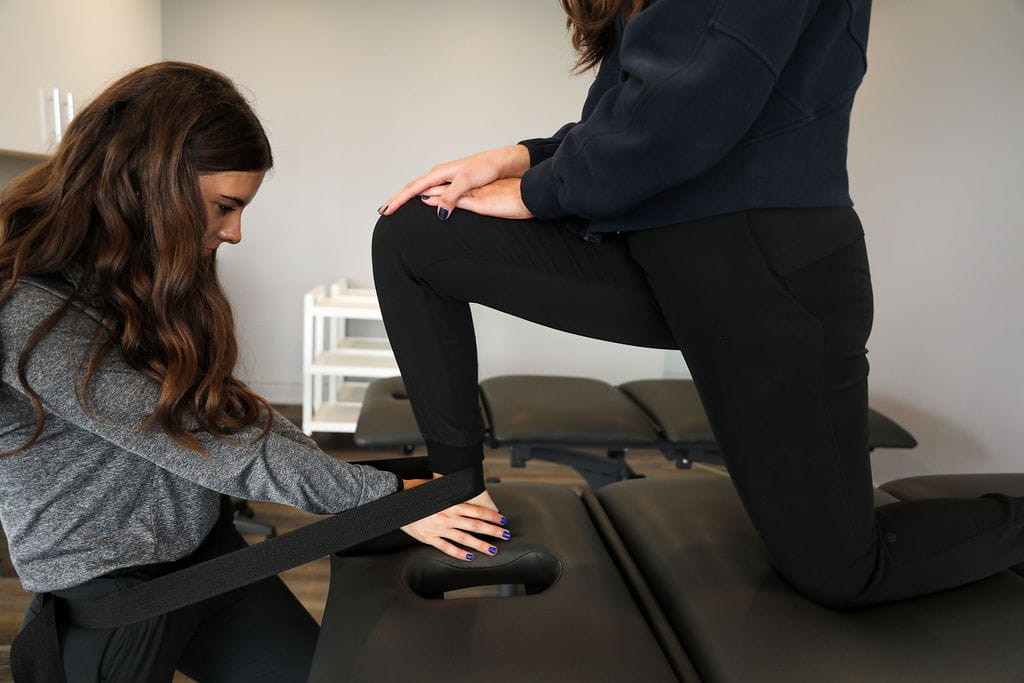
Step 1: Initial Assessment
Our physiotherapist will conduct a thorough assessment of your condition, including a detailed medical history review and a physical examination. This step helps us understand your specific concerns and develop an appropriate treatment plan.
Step 2: Pain Management
Physiotherapy plays a significant role in pain management through various techniques and modalities tailored to each individual’s needs.
Pain management techniques that may be used in your rehabilitation are:
- Heat/Cold Therapy
- Manual Therapy
- Electrotherapy
- Education and self-management strategies
- Activity modification
Step 3: Range of Motion Exercises
Step 4: Strengthening Exercises
Step 5: Balance and Proprioception
Step 6: Education and Prevention
Click here to book an appointment with a physiotherapist at one of our eight locations.
- Physiotherapy Etobicoke – Triangle Physiotherapy Etobicoke
- Oakville Physiotherapy Clinic – Triangle Physiotherapy Oakville
- Physiotherapy North York – Triangle Physiotherapy North York
- Mississauga Physiotherapy Clinics – Triangle Physiotherapy Mississauga
- Downtown Physiotherapy Clinics – Triangle Physiotherapy King West
- Uptown Physiotherapy Clinics – Triangle Physiotherapy Lawrence Park
- Physiotherapy Clinic Downtown Toronto – Triangle Physiotherapy Queens Quay
- Physiotherapy Clinics Mississauga – Triangle Physiotherapy Erin Mills
“Effective ankle rehabilitation requires expert physiotherapy care. Triangle Physiotherapy offers specialized services across the GTA, including Physiotherapy in Etobicoke, Oakville, North York, Toronto, Lawrence Park, Queens Quay, Erin Mills, Mississauga, and Liberty Village. Our experienced team is here to help you recover strength, mobility, and confidence in your ankles.”
Winter is here and the snow is around the corner. The season for skiing is upon us. Whether you are a novice skier or experienced in the sport, there is always a possibility of an injury. This article talks about common skiing injuries and how you can recover from them.
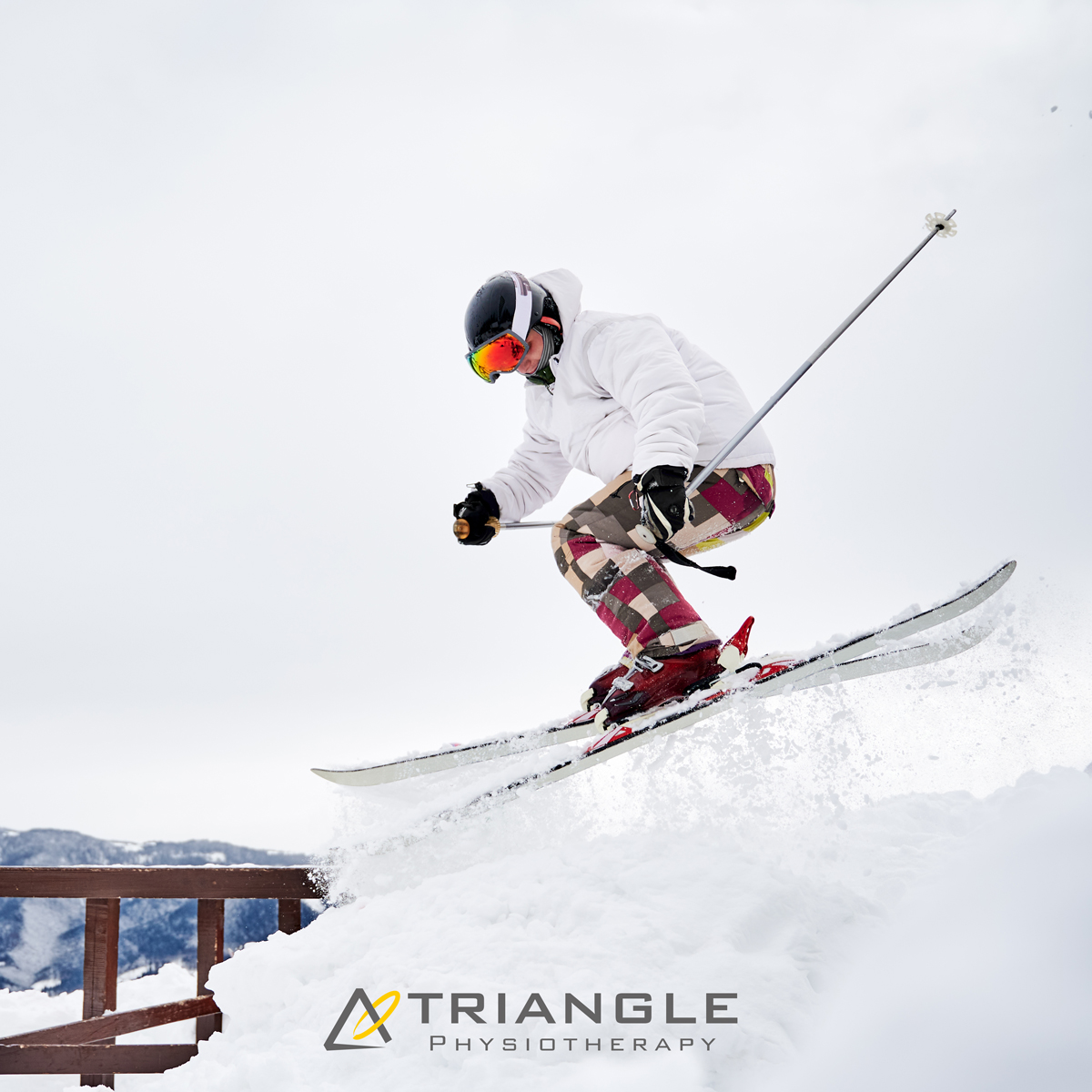
What are some common snow sports injuries?
Some common injuries sustained during skiing are:
Head
- Concussion
- Traumatic brain injury
Neck & Shoulders
- Whiplash
- Fracture
- Torn rotator cuff
- Shoulder dislocation
Back & Spine
- Herniated disks
- Lower back pain
Hand
- Skier’s thumb
- Wrist sprain
- Finger fracture
Knees & Legs
- ACL/PCL rupture
- Meniscus injury
- Fracture
How can I protect my knees while skiing?
Using properly adjusted bindings, maintaining proper ski technique, and conditioning exercises to strengthen the muscles around the knee can help protect against knee injuries.
What is “snowboarder’s fracture”?
Snowboarder’s fracture refers to a fracture of the lateral process of the talus bone in the ankle, usually caused by an inversion injury when landing from a jump.
Are head injuries common in skiing?
Head injuries can occur in skiing, especially in the absence of helmets. Wearing a properly fitted helmet significantly reduces the risk of head injuries.
How do I know if I have a concussion from skiing?
Symptoms of a concussion may include headache, dizziness, nausea, confusion, sensitivity to light, and memory problems. If you suspect a concussion, it’s crucial to seek medical attention.
What do I do after I get injured while skiing?
No matter how minor the injury, it is advisable to seek a doctor or physiotherapist’s advice to make sure it does not get worse. A physiotherapist can assess the extent of your injury. Follow their advice and recommendations for treatment.
When should I seek medical help for a ski injury?
Seek medical help if you experience severe pain, swelling, inability to bear weight, persistent joint instability, or any symptoms of a head injury or concussion. It’s essential not to ignore potentially serious injuries.
How do I book an appointment with a physiotherapist near me?
Click HERE to book an appointment with a physiotherapist or chiropractor at one of our eight locations.
- Physiotherapy Etobicoke – Triangle Physiotherapy Etobicoke
- Oakville Physiotherapy Clinic – Triangle Physiotherapy Oakville
- Physiotherapy North York – Triangle Physiotherapy North York
- Mississauga Physiotherapy Clinics – Triangle Physiotherapy Mississauga
- Downtown Physiotherapy Clinics – Triangle Physiotherapy King West
- Uptown Physiotherapy Clinics – Triangle Physiotherapy Lawrence Park
- Physiotherapy Clinic Downtown Toronto – Triangle Physiotherapy Queens Quay
- Physiotherapy Clinics Mississauga – Triangle Physiotherapy Erin Mills
“Recovering from a skiing injury requires targeted physiotherapy to regain strength and mobility. Triangle Physiotherapy offers specialized services across the GTA, including Physiotherapy in Etobicoke, Oakville, North York, Toronto, Lawrence Park, Queens Quay, Erin Mills, Mississauga, and Liberty Village. Our experienced team is dedicated to guiding you through a safe and effective recovery process.”
Our knees support the weight of our bodies with each step we take. When we begin to experience knee pain, it can be very debilitating, especially if the pain is severe. Some common causes of knee pain are: joint strain or damage, patellar maltracking, obesity, poor foot biomechanics, and many others. In some cases, severe osteoarthritis (OA) can be the cause of the knee pain. While exercises are extremely beneficial in building muscular support and managing the effects of the OA, a knee brace can be a good intervention to provide support and delay any surgical intervention. It can help to reduce swelling and pressure on the joints and can shift weight away from the damaged and painful areas of the joint. This can significantly improve a person’s mobility by decreasing their pain.
What is Osteoarthritis?
Osteoarthritis (OA) is the most common joint condition. At its core, it is the deterioration of the cartilage which lines our joints and makes movement fluid and pain-free. While mild OA is a normal age-related change, severe OA involves a significant reduction in the amount of lubricating fluid (known as synovial fluid) within the joint. This can cause significant pain with movement, stiffness, and imbalance because of a more bone-on-bone type of feeling.
Also read, Best Physiotheraoy clinic in Mississauga
Knee brace for Osteoarthritis
As mentioned above, a knee brace can be a good management option for dealing with the effects of OA. A good knee brace will offer the support you need in order to balance and evenly distribute your weight in order to have a more comfortable walk or run. Material used to make braces can be plastic, metal, or sometimes composite materials. In addition, synthetic rubber is used for positioning and padding. It’s made in way so that your skin can breathe while your knees are supported.
Also read, Best Physiotherapy Clinic in Oakville
Types of knee braces in osteoarthritis
There are three styles of braces: Basic, Compression and Unloader for three different levels of support.
- Basic braces are for those who suffer from mild pain that worsens with activity and motion. Most people wear them while exercising or walking/running for long periods of time.
- Compression sleeves/advanced braces provide support for moderate osteoarthritic pain. They are generally worn during exercise in order to keep the joints warm and hold the knees in proper alignment.
- Unloader braces are for severe osteoarthritis. They are worn when a person is suffering from severe pain due to their knee OA and will physically unload the joint, causing less pressure to go through it.
We at Triangle physiotherapy will assess you knee joints and develop a complete treatment plan for you. Our expert physiotherapists can help you choose the correct knee brace to manage your OA. Book your appointment now and feel some relief so you can get back to your normal life as soon as possible!
Visit Here: https://www.trianglephysiotherapy.com
Using a knee brace can help manage osteoarthritis pain and improve mobility, but combining it with physiotherapy provides the best results. For personalized physiotherapy care, consider clinics in physiotherapy Etobicoke, Oakville, North York, Toronto, Lawrence Park, Queens Quay, Erin Mills, Mississauga, and Liberty Village. These locations offer specialized treatment plans to support knee health and enhance your quality of life.
- Bones and joints
- Ligaments and tendons
- Muscles
- Nerves
- Blood vessels
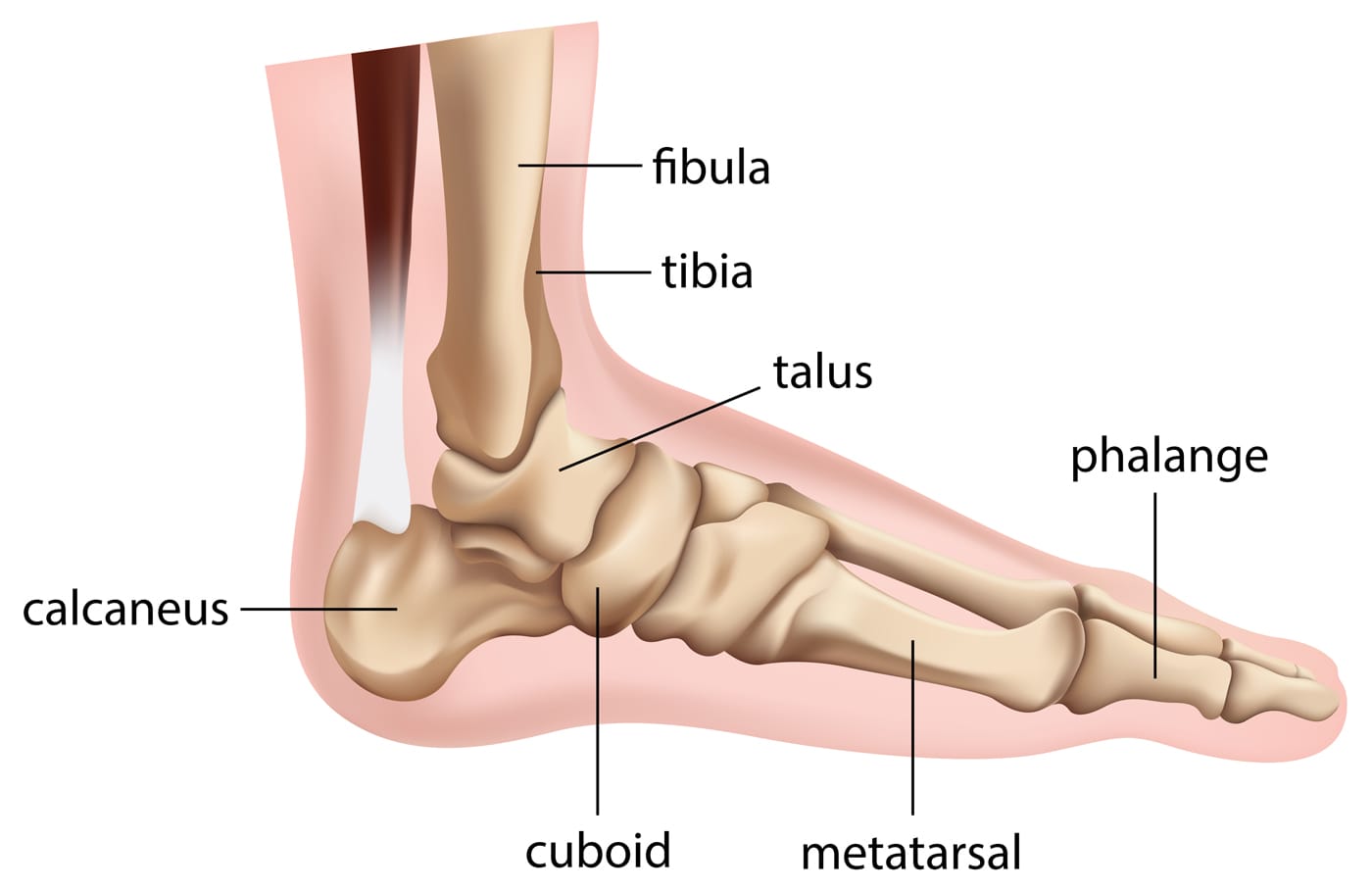
Ankle bones
The ankle joint consists three bones: The ankle bone (Talus), shin bone (Tibia), which holds the Talus at the lower end along with a parallel thinner bone (Fibula) and the heel bone (calcaneus). The talus has a socket-like structure which allows it to work like a one-directional hinge.
Aslo read, Physiotherapy Clinic in Etobicoke
Ligaments and Tendons
Ligaments and Tendons serve similar functions but in slightly different ways. While they are both referred to as “soft tissue” structures, ligaments attach bones to bones while tendons attach muscles to bones. Both of them are made of collagen fibers.
Muscles
Muscles work by stretching and contracting, which allows us to walk, run and jump. Below are some of the most prominent muscles of the lower leg:
- The peroneals (peroneus longus and peroneus brevis) are located on the outside edge of the ankle and are mainly responsible for bending the foot down and out.
- The calf muscles (gastrocnemius and soleus) connect to the calcaneus by the Achilles tendon. When the calf muscles tighten, they bend the ankle down.
- The tibialis posterior muscle supports the arch of the foot and helps turn the foot inward.
- The tibialis anterior pulls the ankle upward.
Also read, Physiotherapy Clinic in Mississuaga
Nerves
The nerves on the outer edge and front part of the ankle control muscle movement and provide sensation to the top and outside edge of the foot.
Blood Vessels
There are many arteries which supply blood to the ankle such as the dorsalis pedis, tibial artery, etc. Without adequate blood supply, the muscles of the ankle would not be able to function and would cause significant impairments.
We have 6 clinics located across the GTA: Etobicoke, Oakville, Mississauga, North York, and Toronto (King Street West and Yonge Street. If you are suffering from foot or ankle problems you may benefit from treatment. Don’t suffer any longer! Call or email us today and we will be happy to answer all of your questions.
You can book an appointment for Ankle Anatomy: Click here to book an appointment
Understanding ankle anatomy is crucial for preventing injuries and ensuring proper treatment. If you need expert physiotherapy services to help manage ankle conditions or injuries, consider visiting clinics in physiotherapy Etobicoke, Oakville, North York, Toronto, Lawrence Park, Queens Quay, Erin Mills, Mississauga, and Liberty Village. These locations provide comprehensive care and customized treatment plans to support your recovery and maintain ankle health.
Are your worries all perched on a pillow? And we don’t mean figuratively, but literally, are your worries all about THE PILLOW? Well, you are not in as uncommon a dilemma as you may think. Physiotherapists frequently get queries about pillow-related problems.
Sleeping on the wrong pillow, or one that is too worn out, not only leads to headaches, backaches, and neck cramps but also prevents you from getting a good night’s sleep. Lack of proper sleep can lead to many serious health issues, like obesity, heart disease, diabetes, etc.
It is imperative that you choose the right pillow for yourself but the kind of pillow you should pick will depend on your own unique needs as well. A physiotherapist is the best person to tell you exactly what you need. However, here are a few things that you can keep in mind while making a choice –
- Your usual sleeping position
- The shape and size of your head, neck and back
- Desired softness/firmness of the pillow
- Any neck pain, or backache you may have
- And your budget

Also read, Physiotherapy Clinic in Mississauga
There are a plethora of pillows in the market – cotton, polyester, feather, down, memory foam etc. However, these don’t cater to specific support or pain needs. If you have been injured, or have a particular condition, you will need a pillow that caters best to not just your problem, but also the stage that you are in. There are three main stages –
- Accommodation
- Correction
- Maintenance
For each of these three stages, you will need a specific kind of pillow.
Accommodation Stage:
Specialty pillows that are designed for the ‘Accommodation’ stage, are pillows that bring in comfort and ease by providing support and stabilizing the existing ailment or disorder. Such pillows are often called Displacement pillows and are often recommended by physiotherapists for short-term pain relief after an injury.
Correction Stage:
The next stage of an issue or injury is ‘Correction’. At this stage, a doctor or physiotherapist attempts to find a remedy for the cause of the problem, and thereby correct it. Pillows recommended in this stage are often designed to provide support, and sometimes to even change the sleeping position of the injured or ailing person. There are various ‘Supportive’ pillows to meet different support levels, firmness and neck lobe size needs of different patients. There are also specialized ‘Corrective’ pillows, which can reduce headaches, neck pain, joint pain, and whiplash discomfort and can even improve nerve function. A physiotherapist can tell you what is the ideal Supportive or Corrective pillow you need, based on your health and body needs.
Also read, Physiotherapy Clinic Oakville
Maintenance Stage:
Pillows for the last stage, ‘Maintenance’, help to promote good health by returning and keeping the body in its natural alignment. At this stage maintaining the normal curvature of the neck and spine is of utmost importance. While the normal curvature of one person’s neck and spine may differ from another, there are some general guidelines that a physiotherapist can jot down to help you understand your needs better. Comfort and support are the most important of these.
There are also Aqua pillows, which perform all the 3 functions of a pillow:
- Accommodation: Since water is fluid, a person gets customized accommodation that happens in real time, as the individual changes their position on the pillow.
- Correction: The volume of water determines the firmness and density of the pillow, which means different amounts of water can be utilized to help correct the neck position of different people in different stages of healing.
- Maintenance: Since the volume of water remains constant until changed manually, it helps maintain the neck posture at all times while sleeping.
A lot of people buy a pillow, try it for a few nights, and then feel it isn’t right for them. Sometimes the pillows can be returned, but more often, people end up having a collection of pillows that they have hardly ever used. An Aqua pillow is a huge savior in this aspect, as it can be customized for each individual! The water levels can be modified to best suit the clinical condition, neck shape, and size, and preferred sleeping position of the buyer.
There are also specially designed Orthopaedic pillows for specific conditions like arthritis, fractures, and slip discs. A physiotherapist can enlighten you more about these.
Seek the help of our professionals at any of our locations in Etobicoke, Oakville, North York, Mississauga & Downtown Toronto, and say goodbye to your pillow problems!
Proper posture and support are essential for preventing discomfort and maintaining spinal health. For those seeking professional physiotherapy services to address posture-related issues, consider visiting clinics in physiotherapy Etobicoke, Oakville, North York, Toronto, Lawrence Park, Queens Quay, Erin Mills, Mississauga, and Liberty Village. These clinics offer expert care and tailored treatment plans to help you improve your posture and overall well-being.
Who doesn’t want to stay flexible, especially as they age? Well, stretching is one very good way to stay flexible! According to the American College of Sports Medicine, it’s good to stretch all the major muscle groups at least two times a week. Stretching is an integral part of physiotherapy, and a physiotherapist is the perfect person to guide you on how to stretch. Physiotherapists recommend stretching regularly, as it keeps one’s hips and hamstrings flexible later in life, which is very important for easy movement in old age.
Apart from this stretching has many other benefits:
- It increases muscle flexibility
- It improves posture
- It also improves performance in sports & other activities
- It provides relief from stress
- It helps prevent injuries
- It prevents Delayed Onset Muscle Soreness or DOMS, which is the soreness and pain one suffers a few hours to a few days after hectic exercise.
Also read, Physiotherapy Etobicoke
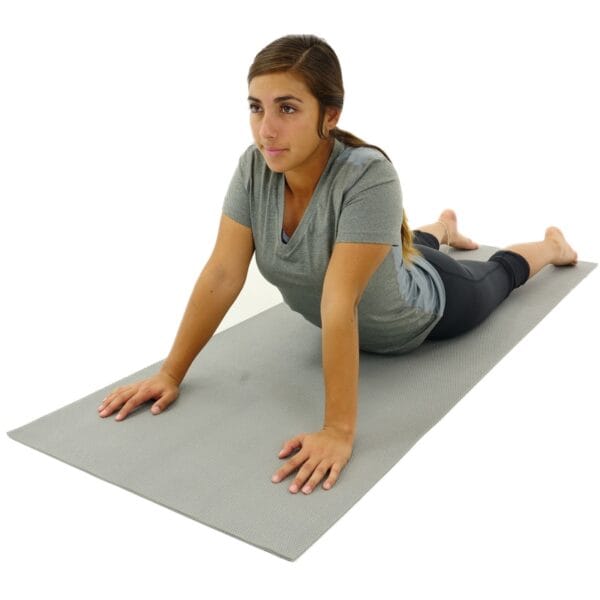
The first question that many wonder about, is what body parts should one stretch.
In physiotherapy, stretching the following body parts is considered essential –
- Neck
- Jaw
- Upper Back
- Shoulders
- Triceps
- Biceps
- Wrists
- Quadriceps
- Calves
- Hamstrings
- Hips
- Groin
The next thing to take into consideration is if there is the right amount of time to stretch. While there is no particular amount of time that physiotherapists suggest you stretch, recent studies show that 3 sets of 30-second stretches, 5 days per week for 4 weeks help to strengthen hamstring muscles greatly.
Also read, Physiotherapy Treatment Oakville
There are many kinds of Stretching that physiotherapists recommend.
Stretching a muscle to its full extent and holding it for 15 to 30 is known as the Static Stretch. You can exceed this time frame a bit but don’t stretch until it hurts, as you can end up doing more damage to your muscles than good by over stretching. However, don’t do Static Stretches before a run or sprint, as this can slow down your speed by tiring out the muscles.
Before warming up for a run or other sports, doing Dynamic Stretches is more suitable. Dynamic Stretches are stretches that you do, as you are moving, and hence are called dynamic.
Another effective way of stretching, often used in physiotherapy, is Proprioceptive Neuromuscular Facilitation (PNF) Stretching.
PNF stretching is an advanced type of stretching wherein the targeted muscle or muscle group, is stretched, contracted, and finally relaxed. This process is repeated at least 2 to 4 times before moving on to the next muscle group. PNF stretching helps to elongate one’s muscles and was first developed as a muscle therapy by athletes, but is now often used in physiotherapy as a means of increasing flexibility.
Stretching can be used as a preventative precaution, but also to help correct and recover from more serious issues. A physiotherapist can guide you more regarding the stretching exercises that will be best suited to your needs. So visit any of our locations in Etobicoke, Oakville, North York, Mississauga & Toronto, and find out how you can get the most out of stretching!
Stretching with physiotherapy can help improve flexibility, prevent injuries, and enhance overall physical performance. If you’re looking for professional physiotherapy services to guide you in safe and effective stretching techniques, there are clinics in physiotherapy Etobicoke, Oakville, North York, Toronto, Lawrence Park, Queens Quay, Erin Mills, Mississauga, and Liberty Village. These clinics provide expert care and personalized treatment plans to help you achieve your mobility and wellness goals.
Summer is here, and with the sun on one’s face and a cool breeze, everyone feels like going out and enjoying some fresh air. Be it an early morning run or a quick swim, a game of tennis with your buddies or you just dribbling the ball all by yourself at the basketball court; this is the season when even the lazy ones find some energy to be active. Kids in particular love to go out and play in the summers. But with an active lifestyle, or an energetic kid, there is always the chance of sports-related injuries or foot fatigue.
Maybe you twisted your ankle while playing tennis? Or did your kid get hurt while playing football? Maybe too much running is affecting your feet? Or your friend is having pain in his or her legs post-cycling?
Also read, Physiotherapy Clinic in Etobicoke
Orthotics might just be the answer to your woes!
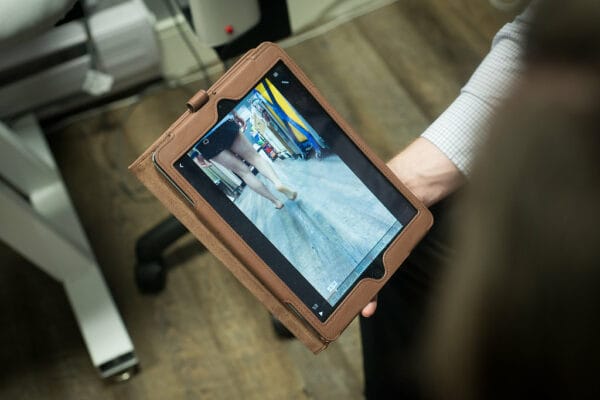
The type of Orthotics recommended to you will depend on not just your ailment or injury, but the shape of your feet as well. A physiotherapist can tell you what kind of orthotics you need, by evaluating your injury and the shape of your feet.
The most popular kind of Orthotics include:
- Casual Orthotics – These are inserts or pads that can be worn with regular shoes.
- Custom Orthotics – these are inserts that are specially designed, keeping the shape of your feet and your particular needs in mind.
- Sports Orthotics – these are inserts or pads that help to absorb shock while doing high-impact activities. Be it running, jogging, cycling, or playing a sport. There are even specialized Orthotics that slip easily into athletic shoes for professional athletes.
- Dress Orthotics – These are inserts that can be put into heels and other fashionable shoes, and are particularly made for women.
- Accommodative Footwear – this refers to special footwear, which can accommodate the Orthotics.
Also read, Physiotherapy Oakville
If you don’t have a sports injury but are just very active, orthotics can still come to your aid. But do seek your doctor’s advice before using any kind of orthotics.
At Triangle Physiotherapy our health professionals cater to your needs and specifications. With the help of our professionals, you can figure out what is the best solution for you, based on your activities and the needs of your feet. So visit any of our locations in Etobicoke, Oakville, North York, Mississauga & Downtown Toronto, to stay active with Orthotics!
Orthotics can be crucial for active individuals looking to prevent injuries and enhance performance. If you need professional physiotherapy services to complement your orthotic treatment, there are clinics in physiotherapy Etobicoke, Oakville, North York, Toronto, Lawrence Park, Queens Quay, Erin Mills, Mississauga, and Liberty Village. These locations offer expert care and personalized treatment plans to support your active lifestyle and overall foot health.

